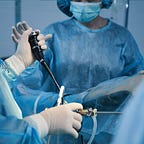Navigating the Miracle: Understanding the Process of Labor and Delivery
Bringing a new life into the world is a miraculous and transformative journey, marked by the intricate labor and delivery process. While pregnancy is filled with anticipation and joy, the prospect of work can be daunting for expectant parents. Understanding the stages and nuances of this process can alleviate anxiety and empower individuals as they embark on the incredible adventure of childbirth.
The Three Stages of Labor
Labor and delivery are typically divided into three distinct stages, each with its own set of developments and challenges.
Early Labor and Active Labor
Early Labor: This phase marks the onset of contractions, which are often irregular and mild at first. The cervix begins to efface and dilate, preparing for the baby’s descent. Early labor can last for hours or even days, providing time for the baby to move into the optimal position.
Active Labor: Contractions become more intense and frequent during active labor. The cervix continues to dilate, and the baby’s descent through the birth canal accelerates. This stage is a pivotal point, indicating that childbirth is well underway.
Transition and Birth
Often considered the most challenging part of labor, the transition phase brings heightened contractions and increased pressure. The cervix reaches full dilation, and the baby moves into the birth canal. This stage is relatively short but can be emotionally and physically demanding.
Birth: The culmination of the labor process, delivery, occurs as the baby emerges into the world. The mother experiences an intense urge to push during this stage. Medical professionals assist in guiding the baby’s head and shoulders through the birth canal. The moment of birth is profound, marking the end of labor and the beginning of a new chapter.
Delivery of the Placenta
After the baby is born, the third stage involves the delivery of the placenta. Contractions continue, aiding in separating the placenta from the uterine wall. This stage is typically less intense than the preceding ones but is crucial to ensure the mother’s well-being.
The Role of Hormones in Labor
Hormones are pivotal in orchestrating the complex dance of labor and delivery.
Oxytocin: The Love Hormone
Often referred to as the “love hormone,” oxytocin stimulates contractions. It is released in response to the rhythmic stretching of the cervix and enhances the intensity and frequency of contractions, driving the progression of labor.
Endorphins: Nature’s Painkillers
Endorphins, the body’s natural painkillers, are released during labor to help manage the pain and stress associated with contractions. These hormones contribute to euphoria and play a crucial role in pain perception.
Adrenaline: The Fight or Flight Hormone
While oxytocin promotes contractions, adrenaline can have the opposite effect. In stressful situations, the body releases adrenaline, which can temporarily slow or stall labor. Creating a calm and supportive environment can counteract the adverse effects of adrenaline, promoting a smoother labor experience.
Coping Strategies and Support During Labor
Understanding the intricacies of labor is vital, but so is preparing for the physical and emotional aspects of the journey. Here are some coping strategies and forms of support that can enhance the labor experience:
Breathing Techniques
Practicing rhythmic breathing can help manage pain and stress during contractions. Slow, deep breaths or patterned breathing can promote relaxation and focus.
Labor Support
Emotional support from a partner, family member, or a doula can make a significant difference. Their encouragement, comfort measures, and advocacy for the mother’s preferences contribute to a positive birth experience.
Movement and Positioning
Changing positions and utilizing movement can facilitate the baby’s descent and ease discomfort. Walking, swaying, or rocking can be effective, as can various birthing positions such as squatting or kneeling.
Hydrotherapy
Immersing in a warm bath or a shower during labor can provide comfort and relaxation. The buoyancy of water can also alleviate pressure on the joints and promote a sense of weightlessness.
Understanding the labor and delivery process is an essential aspect of prenatal education. Armed with knowledge about the stages, hormones, and coping strategies, expectant parents can approach childbirth with confidence and resilience. While each labor experience is unique, the shared understanding of the transformative journey can empower individuals to embrace the miracle of bringing a new life into the world. With proper support, preparation, and a focus on the human body’s incredible strength, the labor and delivery process becomes not just a physical event but a profound and life-changing moment.
